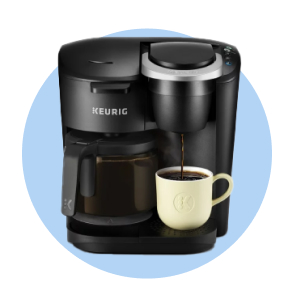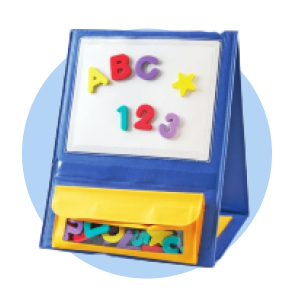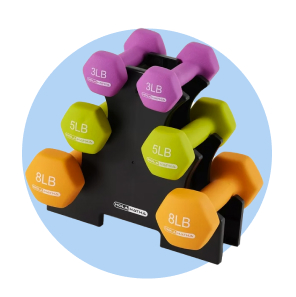
Creating a Strong Brand Identity: 7 Tips for Small Business Owners
Designing for meaningful connections
By now, it’s an accepted fact: the vast majority of people buy things based on emotions, not logic. For marketers, that’s great news. By tapping into your customers’ emotions, you can guide them to choose your product over a competitor’s. The only trouble is forging that emotional connection. How does the process start, and how can you refine it for maximum effect?
What does a customer think of when they think of your business? Whatever the answer is, that’s your brand, and you can take control of it. Here’s how to develop your brand identity from the ground up to build positive emotional connections with your customers.

Building your brand identity
1. Define your core values & mission
The first step in building a brand is to nail down what your business stands for, and what it hopes to achieve. Your core values are the beliefs and principles that you consider important. They guide your decisions, helping you to grow your business without losing your sense of self.
Writing down these principles serves three purposes: to hold yourself accountable to them, to help employees connect with your company and, critically, to help customers build affinity for your brand. If they share your values, they’re that much more likely to choose your product.
Your mission, on the other hand, is the light guiding your business forward. Why does your business exist? What do you hope to achieve, and for whom? A mission statement acts as a beacon whenever you’re lost.
If your mission is the goal, your values are the means. Everything else in your brand should flow from these core ideas. Communicating them effectively is key to connecting with customers.
2. Understand your target audience
Your values and mission are entirely your own, and they’re likely to help you attract customers who connect with them. But who are those customers? What do they like? Where do they live? How do they earn their living?
By answering these questions and more, you can start to understand your customers. That understanding can then feed your brand-building strategy. If you know what your customers value, you can emphasize the parts of your business that reflect those values.
Market research plays a critical role in this part of the process. Consider using these strategies:
- Competitor analysis: What brand elements do your competitors share? Where should you align, and where should you stand apart?
- Customer surveys: How do your customers prefer to shop? What do they look for in a brand?
- Social media research: What do your customers talk about online? Where do they congregate? What kind of in-group slang do they use?
3. Develop your brand’s personality & voice
Personality forms the foundation of human connection. When you meet someone whose point of view harmonizes with your own, you’re more likely to want to spend time with them. The same is true for brands. When a company reflects what you care about, you’re more likely to make a connection with it.
Of course, no brand can harmonize with every viewpoint. Instead, it’s critical to aim for a voice that connects with your particular customers. Imagine your brand as a person, and then describe it. Is it enthusiastic? Suave? Rugged? High-tech?
Brainstorm a list of keystone adjectives for your brand. Then, use that list of adjectives to develop a written voice for your brand. If your company’s image is sophisticated, you may opt for more elevated language. Conversely, a rugged brand might write more directly, using simpler words.
Either way, it’s worth making a list of words that fit your voice, and another list of words that are completely wrong. These “do” and “don’t” lists can help you keep a consistent voice across all of your channels. No matter where a customer finds your brand, they should know what to expect. Note that voice is not the same thing as tone. Your brand voice should remain consistent no matter what, but your depending on who you’re talking to, or the channel you’re using, your tone might change.
4. Write your brand story
Every entrepreneur has their own origin story, and telling it can help humanize their business. Using your brand’s voice, try writing out your own story, or the story of your business. What resources did you start with? What challenges did you face? How did you overcome them?
In telling this story, try to emphasize the parts that will resonate with your target audience. Customers want the businesses they patronize to represent them. If your customers see themselves as underdogs, for example, they’ll want to buy from underdogs, too. But no matter what, stay honest. Your story’s value lies in its authenticity and transparency.
When you’re done, this story can serve as marketing copy, a page for your website and a source of ideas for future campaigns.
5. Create a brand style guide
No words can communicate as quickly as an image. If you want to get your business’s identity across as fast as possible, you’ll need to build a visual palette for it. That includes colors and fonts which, when combined, help create a strong first impression for your customers.
Up first: colors. These should reflect and reinforce your brand’s personality. If your brand is tough and practical, try darker earth tones. If you lean more sleek and high-tech, then bright, metallic hues may work better. In general, your palette should include one or two main colors, plus a set of accent colors for different applications.
Next: fonts. You’ll want one font for headings and another for body text. Both should echo your brand identity. Bold, wide fonts can feel grounded and strong. Thinner fonts may feel more elegant. Serifs can feel formal or authoritative, while sans serifs scan as more casual. Whatever you choose, make sure it balances legibility and identity.
6. Design a compelling logo
Finally, consider your logo. Your logo is the centerpiece of your brand. Like everything else, it should grow out of the deep understanding of what you’ve built so far. There are several kinds of logos that you can choose from:
- Wordmarks are text-based logos, usually of your business’s name.
- Abstract logos are combinations of shapes and colors without real-world counterparts.
- Mascot logos depict a character or person as the face of your business.
- Icon logos serve as a visual metaphor for your business, suggesting some aspect of the product in a single, scalable image.
Whichever kind you choose, customers should be able to associate it with your business instantly. The goal for your logo is to be unique, easy to identify and capable of scaling to any size. After all, this image is going to appear on everything from your website to product packaging. In fact, you may need to create variants for some use cases.
As you design your logo, make sure to incorporate your brand’s fonts and colors wherever appropriate.
7. Build awareness with social media
Now that you’ve built a strong brand identity, it’s time to get it in front of your customers. These days, there are few ways better than social media. Nine in 10 Americans use it, which means that social media is even more popular than live football. Plus, it’s a performance marketing platform, which makes it easy to get results.
Using your audience research, you can target the platforms and hashtags that your customers prefer. That can make reaching your audience much more cost-effective.
To ensure you stay on track, consider using SMART goals. SMART goals have the following characteristics:
- Specific: The more specific your goals are, the clearer it will be when you reach them.
- Measurable: If you can measure your progress, you can stay on track more effectively.
- Attainable: Goals should be ambitious, but not so ambitious that they’re impossible to achieve.
- Relevant: Your goals should clearly tie back to your business objectives.
- Timely: Deadlines put a timer on your work, motivating you and building in a chance to evaluate your success.
For more tips on marketing your small business, read 13 Small Business Marketing Tips For Growing Companies.
Keep learning with Walmart Business
When you’re running your own business, there’s always more to learn. If you want insights from fellow entrepreneurs and experts alike, Walmart Business has your back. Head to our Content Hub to learn more about marketing, managing finances and more.
But with Walmart Business, that’s just the beginning. Start a free account today and you can shop a wide assortment of business-critical supplies at affordable prices. Already have an account? Upgrade to a Walmart Business+ membership to combine free shipping1 and rewards on purchases over $2502 for savings worth more than $500/year.3


Limited-time offer
Unlock your special promo code
Stay informed on Walmart Business news & get $20 off a $100 purchase!1
1Minimum order of $100. Promo code can be used one time & may not be combined with other offers. Offer not transferable & void where prohibited by law. Customer responsible for all applicable taxes. Offer expires 12/31/2025 at 11:59pm PT. Further restrictions apply. See terms at checkout for details. Promo code offers available in limited quantities. While supplies last.
1 Excludes most Marketplace items, freight and certain location surcharges.
2 Rewards can only be used toward future purchases on Walmart Business. Additional terms apply.
3 Savings based on 1 free $35+ delivery order vs. $9.95 fee and 1 free shipping order under $35 vs. $6.99 fee biweekly, plus 2% Walmart Business rewards on monthly order >$250 (average value of $400).
Exciting news awaits
Hear firsthand about new products, features & promotions.
By clicking submit, you agree to receive emails about Walmart Business and acknowledge you have read and agreed to our Terms of use and Privacy Policy.










